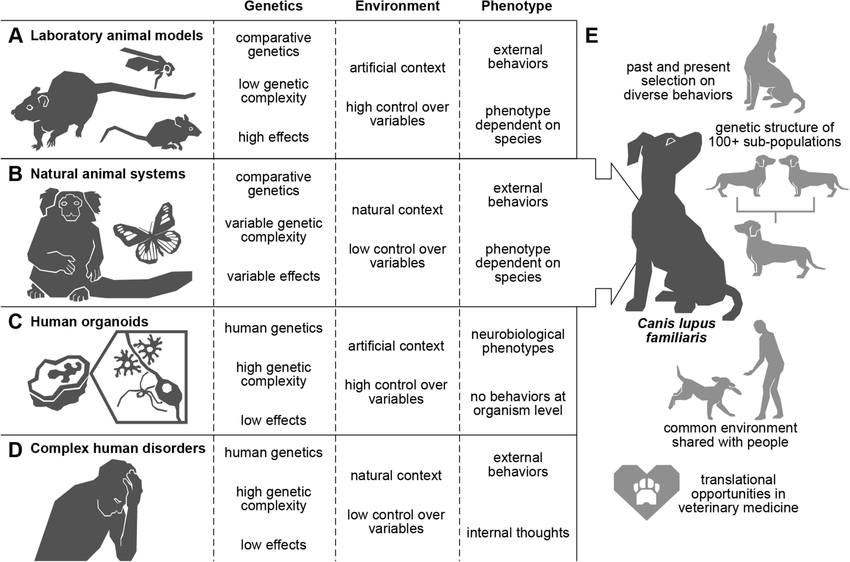The Genetic Foundation of Canine Behavior
The diverse range of behaviors observed in dogs such as loyalty, affection, problem-solving skills, and guarding instincts are fundamentally influenced by their genetic makeup. Behavioral traits in dogs are often the result of complex interactions between multiple genes and environmental factors, but advances in molecular genetics have pinpointed several key genes that regulate neurochemical pathways central to mood, cognition, and social interaction. For instance, genes involved in the synthesis, transport, and receptor activity of neurotransmitters like dopamine and serotonin have been strongly associated with variations in anxiety levels, aggression, sociability, and trainability. Dopamine-related genes influence reward-processing and motivation, which are essential for learning and adaptability, while serotonin pathway genes affect emotional regulation and social behavior.
Breed-specific behavioral tendencies are partly explained by the selective breeding of dogs for particular roles herding, hunting, guarding that favored certain genetic profiles. These selective pressures have resulted in distinct genetic signatures across breeds that correlate with characteristic temperaments and cognitive abilities. Moreover, individual genetic differences within breeds contribute to the variability in behavior seen even among closely related dogs. Understanding the genetic basis of these behavioral traits not only sheds light on the biological mechanisms underlying canine psychology but also informs training strategies, breed selection, and the management of behavior-related disorders. As genetic research continues to advance, it opens the door to more personalized approaches in canine behavior science, helping owners and professionals better understand and nurture the unique personalities of their dogs.
Genetic Variability Underlying Canine Behavioral Traits
Behavioral phenotypes in dogs are influenced by complex genetic architectures involving multiple loci and gene-environment interactions. Variants in genes regulating neurotransmitter synthesis and signaling pathways such as those encoding dopamine receptors (DRD4) and serotonin transporters (SLC6A4) have been correlated with traits like anxiety, aggression, and sociability. Genome-wide association studies (GWAS) have begun to pinpoint quantitative trait loci (QTLs) linked to specific cognitive functions, shedding light on the polygenic nature of behavioral traits and their heritability within and across breeds.
Evolutionary Genomics of the Dog Brain
Comparative genomic studies between domestic dogs (Canis lupus familiaris) and their wild ancestors, gray wolves (Canis lupus), have revealed fascinating insights into how domestication shaped the canine brain at the genetic level. Through whole-genome sequencing and population genetics analyses, researchers have identified selective sweeps regions of the genome where specific alleles rapidly increased in frequency due to positive selection in genes linked to social cognition, neural development, and synaptic plasticity. These selective pressures appear to have favored genetic variants that enhance dogs’ abilities to interpret human social cues, form strong bonds, and adapt to living closely with humans.
One critical genetic pathway under strong selection involves oxytocin signaling, a neuropeptide system known to regulate social bonding, trust, and affiliative behaviors. Variants in genes encoding oxytocin receptors and related molecules show significant divergence from wolves, suggesting that changes in this system were key to the evolution of dogs’ unique social traits. Additionally, genes governing neurodevelopment such as those controlling neuron growth, migration, and synapse formation exhibit signs of adaptive evolution, which likely contributed to the morphological differences observed in the dog brain compared to wolves.
These genetic adaptations not only shaped the structure of the canine brain but also its functional connectivity, enabling complex social behaviors that facilitate communication and cooperation with humans. The evolutionary remodeling of neural circuits involved in emotion processing, attention, and learning has helped dogs become highly attuned to human emotions and commands, laying the foundation for their remarkable success as companions and working animals. This genomic perspective underscores how artificial and natural selection acted together to mold the dog brain, making it uniquely suited for the human-animal bond.

